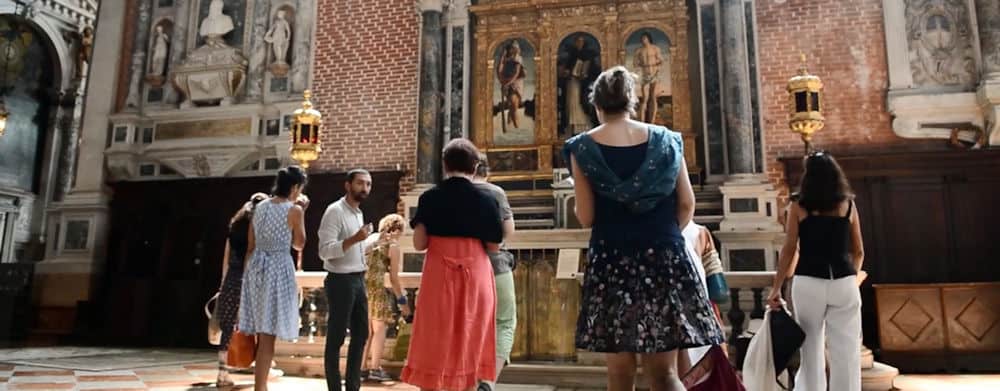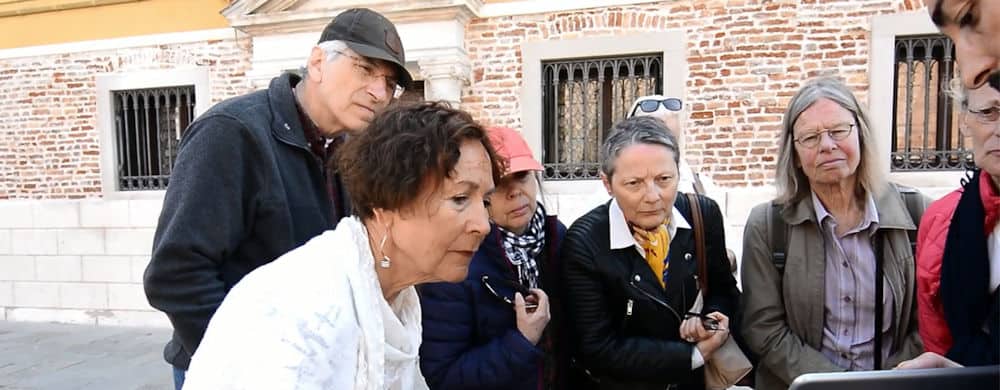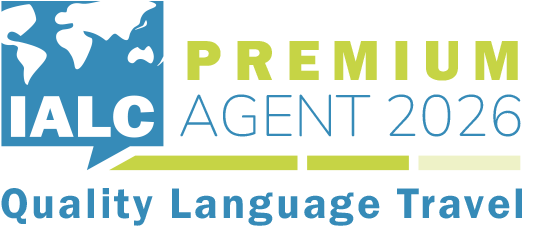Menu
Get your free Quote...
Italian and Art History classes in Italy
Italian and Art History classes in Italy allow you to explore the wealth of paintings, frescoes and sculpture for which the country is world renown. Combine a tour of these art marvels with your Italian studies. See the beauties of the Italian renaissance to the present day, in person. Art History & Italian courses are offered in Venice, Florence, Rome and Milan.
The courses all require a minimum number of participants to run.
Please discuss the programmes offered and the dates you are interested in with the CESA staff for up to the minute information.
Italian and Art History in Venice
Domenico could make a laundry list sound fascinating!
Feedback from a past Art History student – Geraldine
Combine your Italian Course with Art History lectures on the Italian masters, from the Byzantine age to neo-classicism and through to contemporary art and architecture. Since the lessons are held in Italian and since they deal specifically with Venetian art, history, culture and traditions, an intermediate level of knowledge is required (B1 of the European framework).
| Art History sessions: 2026 |
| 15 lessons per week |
| 1 wk: EUR 350.00 |
| 2 wks: EUR 620.00 |
| Admin fee: EUR 70.00 per person |
| Duration: | 01 or 02 weeks |
| Start Dates: | Late March to mid November |
| Italian level: | (B1) Low intermediate+ Italian |
| Location: | At the language school and out and about in Venice! |
| Art course can be booked before or after an Italian language course: | |
| Italian lessons: | 20 x 45 mins/pr week |
| 1 wk: EUR 300.00 | |
| 2 wks: EUR 470.00 | |
| 2026 | Mar | Apr | May (A) |
May (B) |
Jun |
| Week 1 | 16 | 06 | 04 | 18 | 08 |
| Week 2 | 23 | 13 | 11 | 25 | 15 |
| Aug | Sept | Oct | Nov | ||
| Week 1 | 31 | 28 | 19 | 09 | |
| Week 2 | 07 Sept | 05 Oct | 26 | 16 | |
Read more
We recommend students book a place on this course at least one month in advance of their required programme (or longer if possible). All the tickets for the entrances at the museums, churches, etc. are included in the course fee.
The Art course lessons are held either in the morning or in the afternoon for three hours (15 hours a week), according to the opening-hours of museums, palaces and the Great Schools, that are included in the weekly programme (presented during the first day at school).
Get to know and really appreciate the masterpieces of the greatest Venetian artists in painting, sculpture and architecture from the middle-ages to the contemporary age. This experience will be unforgettable, since all the artistic works can be seen in the places they were designed for by Carpaccio, Bellini, Tiziano, Tintoretto, Veronese, Tiepolo, Sansovino, Palladio, Canova, Scarpa and many others.
We have quoted the group Art course (held in Italian) as a supplementary programme in the notes on the CESA Course Finder reports, if you’re interested in private classes (in Italian or in English) on Art History in Venice, please contact the CESA office.
Private Tuition Art classes offered in Italian or English.
Start Dates & Prices: See the notes at the end of the Standard Course on CESA Course Finder
Italian and Art History: Florence
An introduction to the most important Italian artistic styles, enabling students to view the original works of the artists in situ! Explore the main Italian styles and specific Florentine world renown works with an Italian guide. Programmes cover the following Art History topics: General and historical lists; The Romanesque period. The XIII century: Architecture – passage of the French Gothic in Italy; The “Italian” Gothic;The sculpture: from Nicola Pisano to Arnolfo di Cambio. The architectural and urban transformation between the XIII and the XIV century.

| Art course/2026: | 1 wk: EUR 190.00 |
| 2 wks: EUR 380.00 | |
| Start Dates: | Every month |
| Art History session: | 06 lessons per week |
| Italian lessons: | 20 x 45 mins/pr week |
| Italian level: | (A2) Elementary Italian+ |
| Location: | Held at the language school and out and about in Florence! |
Read more
Florence and Siena in the XIV century: Cimabue and Duccio; Giotto; Simone Martini and the Lorenzetti brothers;
Florence in the second half of the century; Traces of international Gothic.
Brunelleschi and the revolution of perspective:
The three fathers of the Italian Renaissance: Brunelleschi, Donatello, Masaccio
The first Renaissance: Florence in the first half of the XV century
Florence in the second half of the XV century: The cultural environment of Lorenzo il Magnifico and Botticelli Leonardo da Vinci, Raphael and Michelangelo.
Italian & Art History: Rome
The History of Italian Art course in Rome will enable you to understand its history and social background. The course is designed to show, by means of slides and guided visits, the development of art in Italy in relation to the rest of Europe and offers you an introduction to the most important artistic styles (Romanesque, Renaissance, Baroque, Rationalism and Modern). You will become acquainted with the most important works of artists such as Raphael, Michelangelo, Bernini, Borromini and Caravaggio while learning about the most significant historical and social events that accompanied them.

| Art course/2026: | 1 wk: EUR 190.00 |
| 2 wks: EUR 380.00 | |
| Start Dates: | Every month |
| Art History session: | 06 lessons per week |
| Italian lessons: | 20 x 45 mins/pr week |
| Italian level: | (A2) Elementary Italian+ |
| Location: | Held at the language school and out and about in Rome! |
Read more
The programme considers the following subjects:
ROME – the Eternal City Ancient Rome: the Forum Romanum (Foro Romano); the Palatine (Palatino); the Imperial Forums; the Colosseum; the Capitol.
Medieval Rome: Trastevere; Santa Maria in Trastevere; Basilica Santa Cecilia; Santa Maria in Cosmedin and la “Bocca della verità”; San Clemente.
The Vatican city: St. Peter’s; St. Peters square; the Vatican Museums. Il Barocco: Gian Lorenzo Bernini – Piazza Navona, elephant Obelisk, S. Maria sopra Minerva; Francesco Borromini – Francesco Borromini’s S. Ivo alla Sapienza; Michelangelo Merisi da Caravaggio – San Luigi dei Francesi, Sant’Agostino and Santa Maria del Popolo; Galleria Borghese.
Rome’s Rationalism District: EUR. Contemporary Rome: the Ara Pacis; the Auditorium.
To spend a vacation in Rome means being in contact with history, art and a wide variety of cultural phenomena. The History of Art in Rome course is an opportunity to get to know the city of Rome throughout the course of its historical and artistic evolution.
Starting with the classical era, exploring it through the texts of ancient writers and the direct experience of monuments which have survived the passage of centuries. We then move onto Christianity, which had its early development in this city, via the works of sacred art found in local churches and convents.
Students will then acquire an appreciation for the whimsical Baroque and Rococo masterpieces that decorate the piazzas and streets. We’ll conclude with works of art and architecture of the period after 1870, when Rome became the capital of Italy.
The History of Art in Rome course consists of classroom sessions as well as on-site visits across the city. The syllabus is constructed as a series of interlocking journeys of discovery. The course begins in the classroom, using texts, slides, illustrations and maps to introduce the origins of the history of Rome and its development through time.
Rome from its beginnings to the Empire: Our focus is on major monuments of classical antiquity, such as the Roman forum complex, the Colosseum and the Pantheon, which trace both the political and cultural evolution of Rome from the period of the Republic to that of the Empire.
Early Christian and Medieval Rome (4 th – 13 th centuries): We explore the churches and convents which gave visual form to Christian spirituality in their architecture, mosaics, frescoes and altarpieces by such masters as Cavallini, Torriti, Rusuti, etc.
Renaissance Rome (15 th-16 th centuries): We experience the world-renowned masterpieces of Michelangelo, Raphael and Bramante in churches and palaces such as the Vatican basilica and Villa Farnesina, as well as innovative urban spaces like the Capitoline piazza and the Via Giulia. Baroque Rome (17 th-18 th centuries): Our topic is the triumph of fantasy in the fountains, palaces and churches of Bernini and Borromini and their successors, with particular emphasis on the areas of Piazza Navona, Piazza Quirinale and the Spanish Steps.
Rome the Capital (1870) and Fascist Rome: We investigate the period in which Rome was transformed into a modern capital by the Savoy monarchy, which commissioned wide avenues and enclosed piazzas. Later, with Mussolini, Rome regained its central role as the symbol of classical culture, as seen in the EUR quarter and the Italico Forum.
Italian and Art History: Milan
Study Art history in Milan with guides who are passionate about the Art of Italy and the city. Explore the history and culture of Italy through fabulous works of art, monuments and churches. The course is divided into two sections: – Theoretical lessons, which are held in the school classrooms and are dedicated to introducing students to Italian history and art history, and specifically how those artistic periods correspond to the history of Milan. – Outdoor lessons, which are held at the end of the course and aim to deepen those topics that the students liked the most and to visit the artistic monuments of the city of Milan.

| Art course/2026: | 1 wk: EUR 190.00 |
| 2 wks: EUR 380.00 | |
| Start Dates: | Every month |
| Art History session: | 06 lessons per week |
| Italian lessons: | 20 x 45 mins/pr week |
| Italian level: | (A2) Elementary Italian+ |
| Location: | Held at the language school and out and about in Milan! |
Read more
During the lessons the use of visual materials will be very important and useful. The artistic periods are introduced and presented by giving students the visual image of the main artistic works (paintings, sculptures, architectural monuments, etc.) of that period. The visual support consists of images, video, and CD material.
Examples of programme content:
Celtic Tribes to Roman Empire: The first Celtic settlements and the arrival of the Romans. Archaeological revivals of Roman culture and analysis of the first urban centers. Analysis of three architectural styles, S. Lorenzo basilica.
Early Christian Milan to the foundation of the Commune: The importance of St. Ambrogio, the Christian culture, and the invasion of Longobard. S.Simpliciano basilica, Sant’ Ambrogio. Analysis and characteristics of the Romanesque style.
Medieval Milan and Visconti lordship: The chronology of the Visconti family tree. Milan medieval monuments such as Mercanti square and St. Eustorgio basilica. General characteristics of Gothic style architecture and Gothic monuments in Milan such as St. Marco square and Duomo cathedral.
The Sforza family and the Renaissance: The court of the Sforza family and Sforzesco Castle. Analysis and characteristics of the birth of the Renaissance in Florence. The Renaissance in Milan including artists such as Filarete and Bramante, and monuments such as Santa Maria delle Grazie, Santa Maria, and San Satiro.
Leonardo da Vinci: His life and works, his period in Milan, and the history and an analysis of The Last Supper, his unique masterpiece. The Spanish domination: the Mannerism period, featuring artists such as Caravaggio, Carracci, and Rubens. Analysis and characteristics of Baroque architecture. St. Alessandro church, Palazzo Marino, Palazzo del Senato, The House of Omenoni, and Palazzo Durini.
French and Austrian domination: Maria Teresa of Austria and the reform of Napoleon Bonaparte. Neoclassic achitecture. Palazzo di Brera, Palazzo Reale, La Scala Theatre, Foro Bonaparte, Parco Sempione, Villa Reale, and Arco della Pace.
Restoration, Revival, and the Kingdom of Italy: The Austrian Restoration and the war for the independence of Italy during the time of Garibaldi. The Industrial Revolution. Analysis of Eclecticism. Monumental Cemetery, Vittorio Emanuele Gallery.
Fascism and Rationalism: Mussolini and fascist architecture in Milan (Piacentini). Liberty Style. Analysis of the characteristics of Rationalism. Muzio and Giò Ponti. Central Railway Station, San Babila Square and The Palace of Justice.








